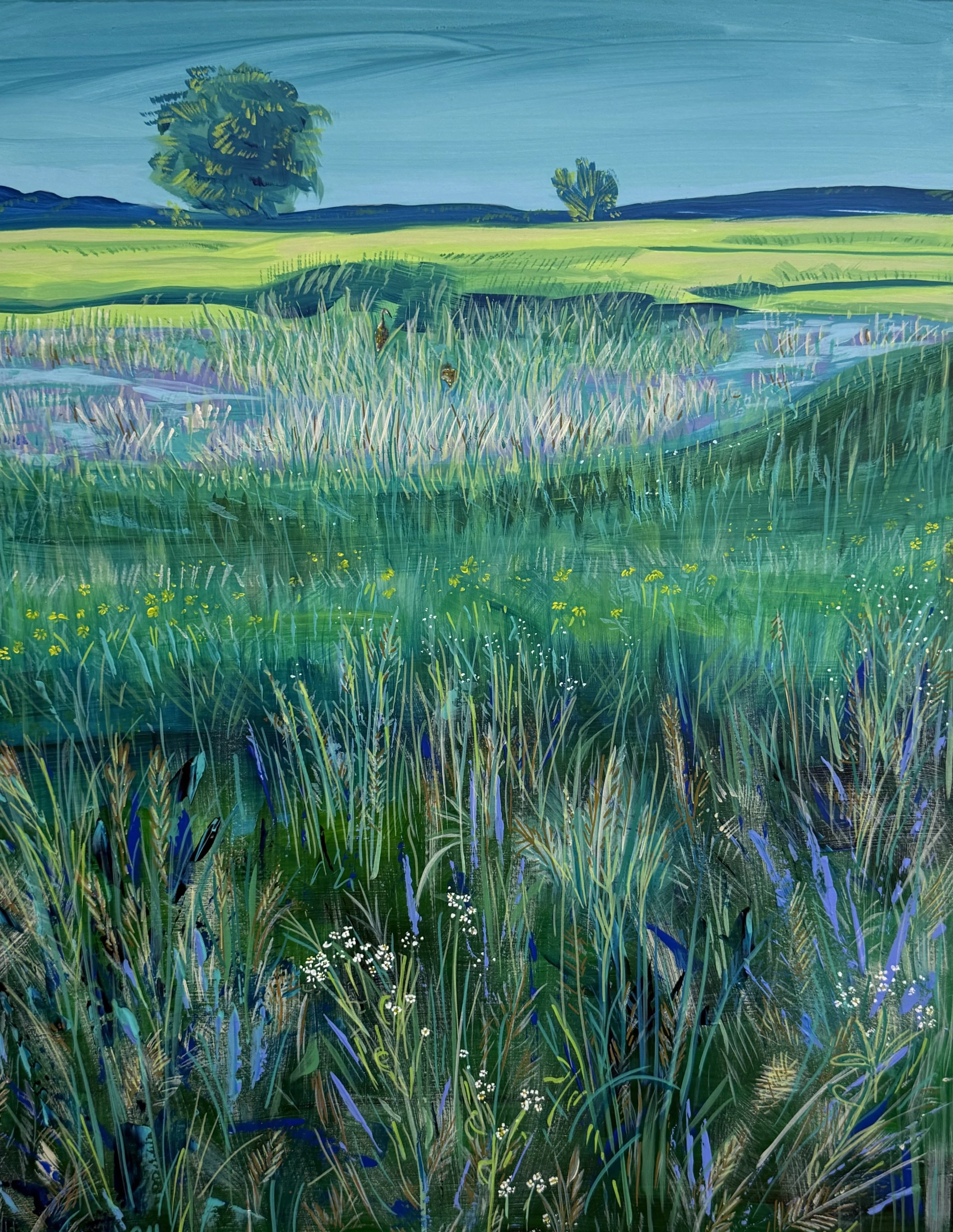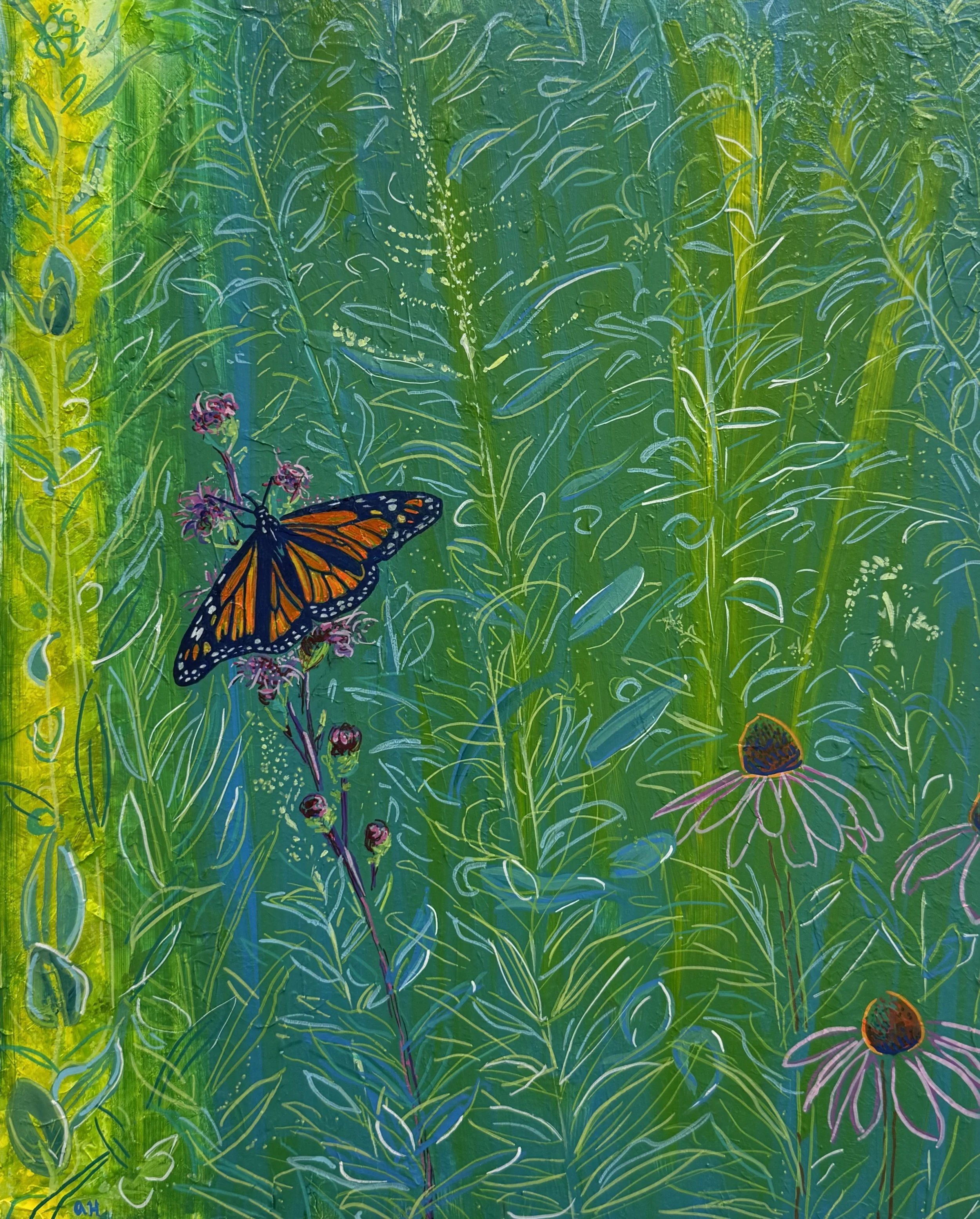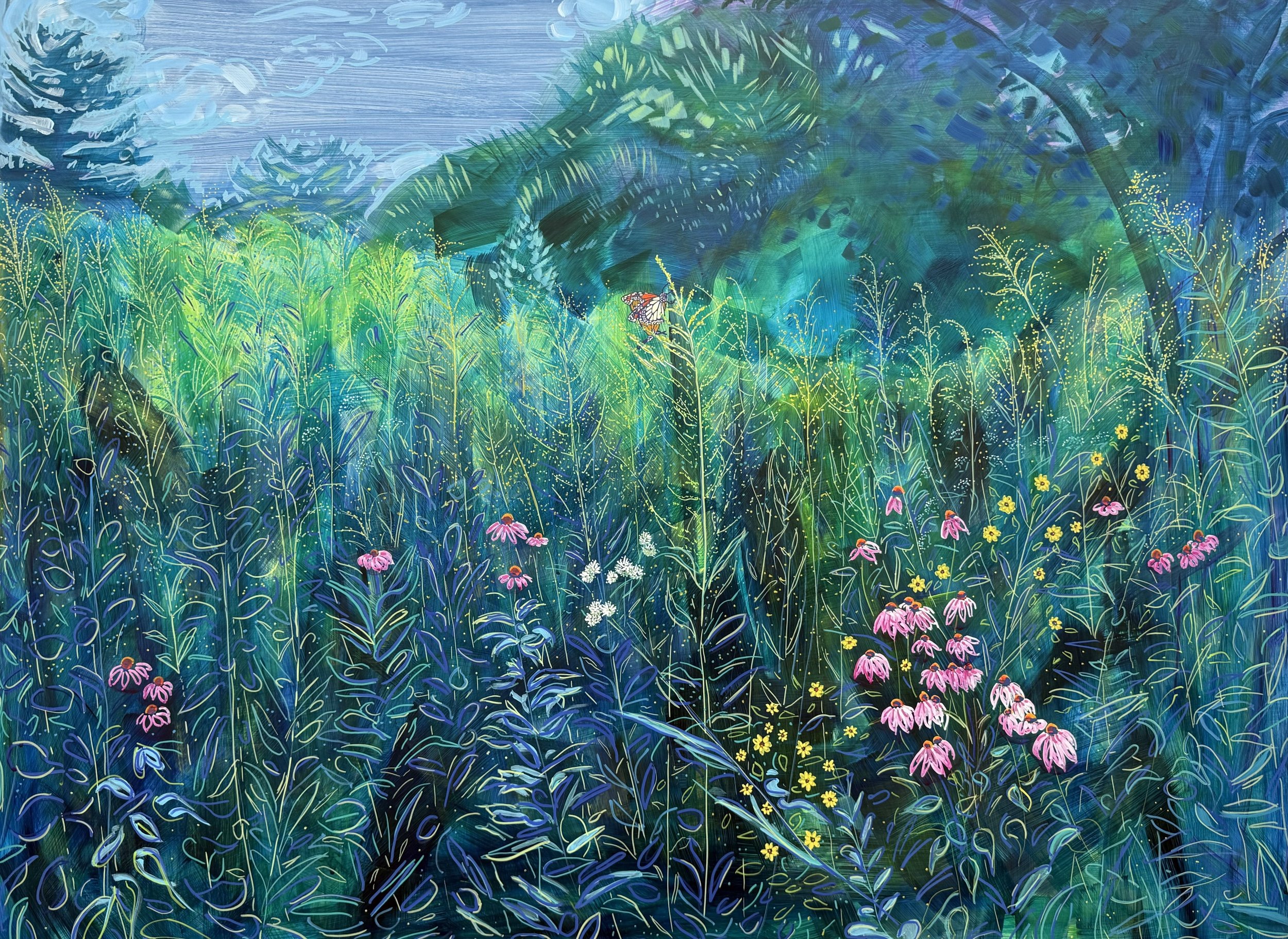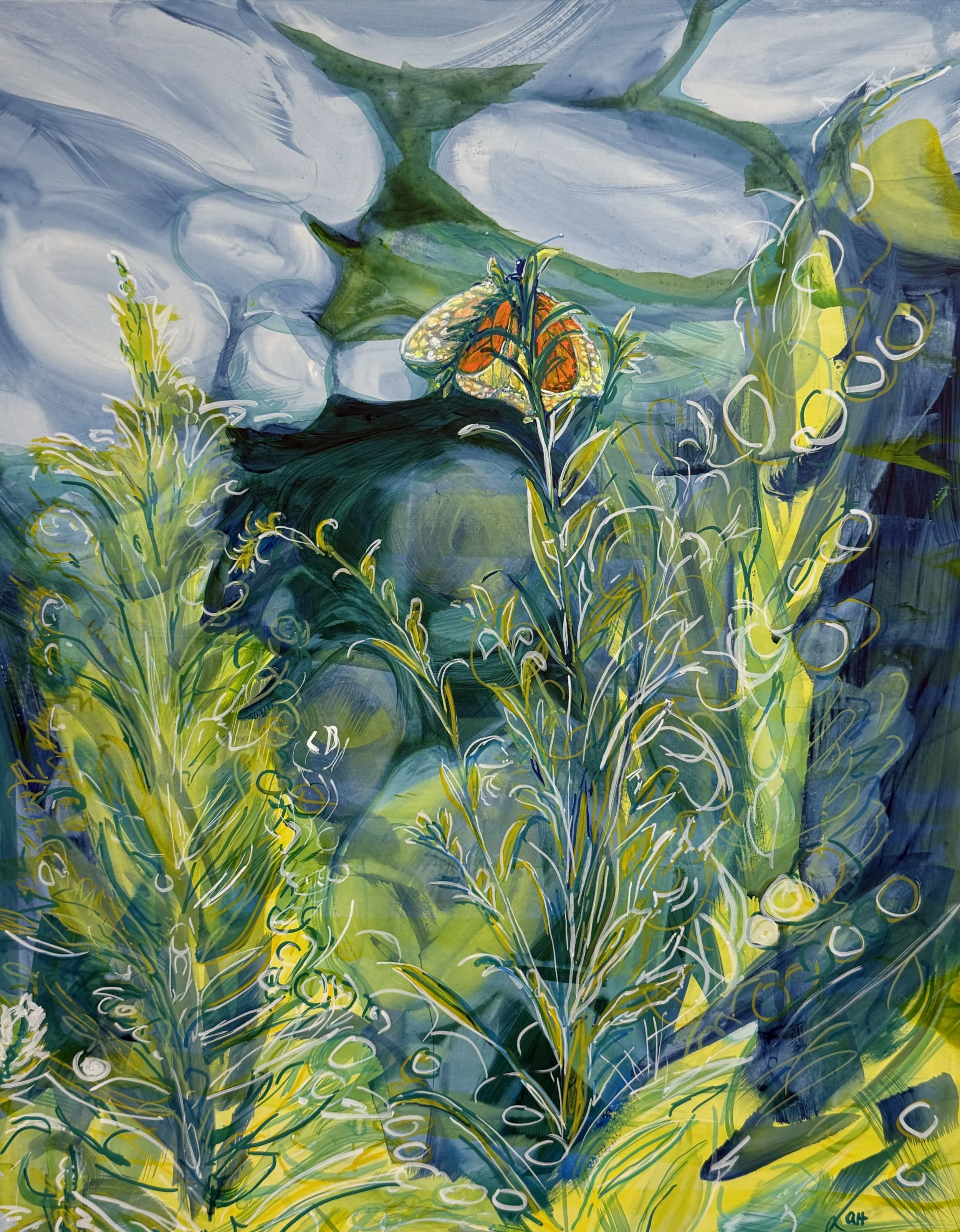… Big Impact
Native plants are a portal to the past and to the future—for migratory species and countless others. The future is in our gardens. The future is in what we choose to grow and protect. I dream of Tiny Remnants …. Big Impact.
This painting series is on display from October 17-November 16, 2025 at Lure of the Local IV | Portals in Mundelein, IL.
2025, acrylic on cradled board, various sizes


In the Butterfly Garden
In summer when the little blue stem shoots up and the common milkweed blooms beside the purple coneflowers, black-eyed susans, and wild bergamot, the butterflies, moths, bees, wasps, beetles and flies dine. The eastern blue takes a moment’s rest, and, hidden below all this, the bunnies, garter snakes, and toads shelter.
The Neighborhood Sandhill Cranes
They announce themselves with a garbled, gargling siren call, distinct and prehistoric. Sandhill cranes mate for life. Our neighborhood has seen them do their courtship dance and take their regular strolls—eating bugs in yards, peaking into windows, clinking claws down the asphalt road. In the newly restored wetlands nearby, they nest amongst the cattails.
In the Wetland
Dating back at least 6 million years, sandhill cranes still follow ancient migratory paths from northern prairie marshes to wintering areas in the south. Only 20 pairs remained in the 1940s, but successful wetland restoration means 20,000 now migrate through Illinois annually, with small numbers breeding in marshy areas in Lake County.
The Female Monarch and the Blazing Star
The liatris blooming on the edge of the prairie was so enticing that the male monarch managed to catch a female while she nectared. The next morning, when she was free again to spend her time as she wished, she went back and drank its sweet nectar.
In the Prairie
From dusk to dawn, the monarchs pair. The courtship looked like a fight over flowers, but he pursued her, not the flowers. Their children will be part of the super generation—they’ll fly from Illinois to Mexico and, hopefully, against all odds, find their own mates in spring.
The Male Monarch and the Goldenrod
He was older, with missing chunks and fading scales on his wings. But he didn’t hold back. He caught her and held on all night, not flying, but clinging to the top of goldenrod to help hold their weight. He rests now in the sun at dawn, exhausted and relieved.
Building off of last year’s Tiny Remnants series which looked at individual native plants and the creatures who love them, … Big Impact looks at what happens when native plants collect and work together — in prairies, wetlands, woodlands, and our home gardens.
Each painting is inspired by migratory species that have come through my yard and a nearby newly restored wetland. It chronicles sandhill cranes and the wetlands, hummingbirds and the woodland, and monarchs and the prairie as they successfully find mates in their summer home—my home.
I planted milkweed and saw monarch eggs and caterpillars.
I planted native flowers and saw nectaring butterflies.
I planted a prairie and saw mating monarchs—saw them reach the pinnacle of their lives, the defining moment, the beginning of the super generation that flies to Mexico and propels their kind into the future.
When we garden for wildlife, we consciously create habitat in a world where it is dwindling, supporting complex life processes like the monarch’s. The bigger the species, the larger the remnants they need. We can restore our own yards and also advocate for the preservation of nearby remnants and restoration of farmland, empty lawns, and storm ditches.*
By planting for big impact, we remember the past and protect our future.
*Click here for more ideas of what you can do to have big impact.





